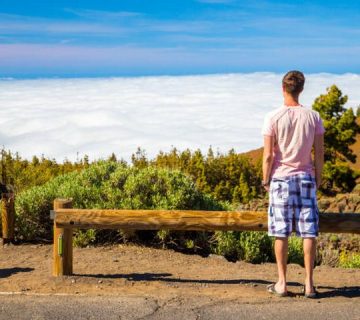Capturing The Night Sky On Kilimanjaro: Astrophotography Tips
Introduction: The Celestial Spectacle of Mount Kilimanjaro
Imagine standing at the roof of Africa, beneath a canopy of stars so vivid, they seem almost tangible. Mount Kilimanjaro, a beacon for adventurers from around the globe, presents not only a physical challenge but also an unparalleled opportunity for those passionate about the night sky. Here, away from the glare of city lights, the heavens unfold in crystal clarity, revealing the Milky Way, distant planets, and meteor showers with spectacular clarity. At Kilimanjaro Centre for Trekking and Ecotourism (KCTE), we understand the magic that twinkles above this iconic peak, and we’re excited to guide you on how to capture it through the lens of astrophotography.
Why Kilimanjaro Offers an Unmatched Astrophotography Experience
Pristine Skies
Kilimanjaro’s high altitude and equatorial location result in minimal light pollution and atmospheric interference, making it an astrophotographer’s paradise. The air is crisp and clear, which allows for spectacular night-time visuals.
Diverse Landscapes
The varying ecosystems from rainforest to alpine desert play beautifully into the composition of night photographs, offering a stunning contrast between the earthly and the celestial.
Unique Photographic Moments
Capturing the night sky with the imposing silhouette of Kilimanjaro or the surreal glaciers at its summit can add an extraordinary touch to any astrophotographer’s portfolio.
Preparing for Your Astrophotography Adventure
Gear Up
- Camera: A DSLR or a mirrorless camera capable of manual mode is essential.
- Lenses: Fast, wide-angle lenses (f/2.8 or faster) are ideal.
- Tripod: Sturdy and reliable to withstand high-altitude winds.
- Extra Batteries: Cold conditions drain battery life faster.
- Remote Shutter Release: To avoid camera shake during long exposures.
Know Your Skills
Understanding the basics of astrophotography and practicing at home can significantly enhance your shooting experience on the mountain.
Plan Your Trip
Timing your climb during the dry seasons (January to March or June to October) can provide clearer skies. Also, aligning your trek with the new moon offers the darkest skies, ideal for astrophotography.
Tips for Capturing the Night Sky on Kilimanjaro
1. Master the Manual Mode
Switch your camera to manual mode to have full control over exposure settings. Set your ISO between 1600 and 3200, aperture as wide as it goes (f/2.8 or wider), and start with a shutter speed of about 20 seconds. Adjust according to the brightness of the sky.
2. Focus with Precision
Auto-focus won’t be reliable in the dark. Use a bright star or distant light to set your focus in manual mode, or set your lens to infinity focus and fine-tune from there.
3. Composition Matters
Incorporate elements of the landscape. The silhouette of Kilimanjaro’s peak, or foreground elements like rocks and ice, can add depth and interest to your celestial shots.
4. Experiment with Timelapses
Set your camera to take continuous shots over several hours. This not only captures movements of the stars across the sky but can also result in stunning timelapse videos that show the rotation of the earth relative to the stars.
5. Be Patient and Persistent
Astrophotography requires patience. Take time to enjoy the experience beyond the lens as you capture the cosmos.
Safety and Sustainability on Kilimanjaro
Respect the Mountain
Always follow the principles of Leave No Trace. Keep Kilimanjaro pristine for future generations of astronomers and adventurers.
Prepare Adequately
Ensure you are physically and mentally prepared for the climb. Acclimatize appropriately to avoid altitude sickness.
Choose a Responsible Tour Operator
At Kilimanjaro Centre for Trekking and Ecotourism (KCTE), we pride ourselves on providing expert guides and support for a safe, memorable, and environmentally conscious climbing experience.
Conclusion: Join Us Under the Stars
Capturing the night sky over Kilimanjaro is an adventure of a lifetime. Whether you’re an experienced astrophotographer or a novice eager to try something new, the celestial dance viewed from atop Kilimanjaro is something that will leave you in awe. We at KCTE are committed to making your journey as magical as the vistas you’ll capture. Ready to embark on this stellar adventure? Book your Kilimanjaro climb with us today and gear up to capture the cosmos!
FAQ: Astrophotography on Kilimanjaro
Q1: What is the best time of year for astrophotography on Kilimanjaro?
The best times are during the dry seasons, particularly around the new moon phases when the skies are darkest.
Q2: Can beginners in photography attempt astrophotography on Kilimanjaro?
Absolutely! While having some basic knowledge is helpful, our guides can assist you in capturing the night sky effectively.
Q3: What should I do if my camera equipment fails on the mountain?
Carrying backup equipment, especially extra batteries and memory cards, is crucial. Also, familiarize yourself with manual fixes and settings adjustments.
Embark on a journey where the stars shine brighter than you’ve ever seen. Capture the cosmos with KCTE, where every trek to the summit comes with a promise of celestial marvels. Join us, and let the stars guide your way on Mount Kilimanjaro!




